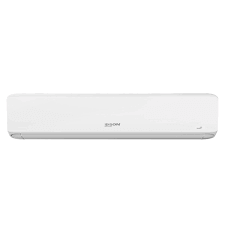How Process Control Blocks Manage Execution in Operating Systems

Modern operating systems are complex software that enable computers to perform multiple tasks simultaneously while maintaining speed, stability, and efficiency. At the heart of this complexity lies an essential data structure known as the process control block (PCB). Without the PCB, the operating system would have no systematic way to manage processes, track execution, or ensure smooth coordination between multiple programs.
The PCB acts like a process “passport,” containing all the information necessary for the operating system to suspend, resume, or terminate a process. It plays a fundamental role in multitasking, multi threading, and even in distributed operating system environments where processes may run across different machines. Additionally, the PCB interacts closely with concepts like scheduling, memory management, and interprocess communication, making it indispensable to the functioning of modern computers.
This article explores the role of process control blocks as determined by fast learner in managing execution, their components, and their significance in modern operating systems.
What Is a Process Control Block?
A process control block (PCB) is a data structure maintained by the operating system for every active process. It contains critical information such as:
-
Process state (running, ready, waiting, etc.)
-
Program counter (the next instruction to be executed)
-
CPU registers
-
Memory management details
-
Process priority and scheduling information
-
Resources allocated to the process
-
Information for interprocess communication
The PCB enables the operating system to keep track of each process’s execution status. Without it, switching between processes would be chaotic, and modern multitasking systems would not function.
Role of the PCB in Process Execution
The PCB plays a central role in how operating systems manage process execution. Its key functions include:
1. Maintaining Process State
The PCB records whether a process is new, ready, running, waiting, or terminated. When the operating system schedules another process, the state of the current process is saved in its PCB. Later, the system can restore the process from exactly where it left off.
2. Supporting Context Switching
Context switching is the act of saving the state of a running process and loading the state of another. This is vital in multi threading and multitasking systems where many processes share the CPU. The PCB stores the program counter, registers, and stack pointers, allowing smooth transitions.
3. Scheduling and Priority Management
The operating system uses the PCB to determine which process to run next. Information about process priority, execution time, and deadlines is stored here. Schedulers rely on this data to balance performance and responsiveness.
4. Resource Allocation
PCBs keep track of files, I/O devices, and memory assigned to each process. This prevents conflicts and ensures that processes can execute without interfering with one another.
5. Facilitating Interprocess Communication
When processes need to communicate, for example through pipes, message queues, or shared memory, the PCB contains relevant information about communication channels. This makes interprocess communication structured and manageable.
Components of a Process Control Block
A typical process control block is divided into several sections, each holding specific information:
-
Process Identification Data
-
Process ID (PID)
-
Parent process ID
-
User ID
Processor State Information
-
Program counter
-
General-purpose registers
-
Stack pointers
Process State
-
Current execution state (ready, running, blocked, etc.)
Memory Management Information
-
Base and limit registers
-
Page tables or segment tables
Accounting Information
-
CPU time used
-
Time limits
-
Job or user quotas
I/O and File Information
-
List of open files
-
I/O devices allocated
This structured data ensures that the operating system can quickly switch between processes without losing execution progress.
PCB and Multi Threading
In multi threading, multiple threads belong to the same process but share memory and resources. While threads have their own stack, registers, and program counter, they rely on a central PCB to keep overall process information.
For instance:
-
The PCB stores memory management details for the process, which all threads share.
-
Each thread may have a thread control block (TCB), which works alongside the PCB to manage execution.
-
The operating system uses the PCB to coordinate scheduling between threads and ensure synchronization.
Thus, the PCB acts as a central reference point, ensuring that threads cooperate while maintaining efficiency.
PCB in Distributed Operating Systems
In a distributed operating system, processes may execute on different machines connected through a network. The challenge here is that the operating system must treat distributed processes as though they belong to a single system.
The PCB becomes more complex in such cases because it must include:
-
Network addresses of processes.
-
Communication protocols for data exchange.
-
Synchronization mechanisms for distributed interprocess communication.
For example, in a distributed database, queries may trigger processes on multiple servers. Each process has its own PCB, but the operating system coordinates them to ensure results are consistent and synchronized.
PCB and Interprocess Communication
Interprocess communication (IPC) allows processes to exchange data and coordinate actions. The PCB is deeply integrated into IPC because it stores information such as:
-
Message queue references.
-
Shared memory segments.
-
Semaphore or mutex values.
When one process sends a message to another, the operating system updates the PCB of both processes to reflect the communication state. This ensures that no message is lost, delayed, or duplicated.
In advanced scenarios like client-server systems, IPC via PCBs allows distributed applications to operate as cohesive units.
Real-World Examples of PCBs in Action
-
Web Browsers
Each browser tab often runs as a separate process. PCBs keep track of their state, memory usage, and open network connections, ensuring that if one tab crashes, others remain unaffected. -
Operating Systems Like Linux and Windows
In Linux, PCBs are implemented as task_struct structures, which manage scheduling and execution. Windows maintains similar structures to handle multitasking. -
Mobile Systems
In Android, processes and their resources are tracked using PCBs and associated data structures, ensuring apps remain responsive. -
Cloud Computing
In distributed systems like cloud servers, PCBs help manage virtual processes running across different machines. This enables services like Google Docs or Dropbox to provide real-time collaboration.
Advantages of PCBs in Operating Systems
-
Efficient Multitasking
Without PCBs, switching between processes would be inefficient and prone to errors. -
System Stability
By isolating process states, PCBs prevent data corruption and interference. -
Support for Multi Threading
PCBs allow efficient coordination between threads and processes. -
Scalability
In distributed operating systems, PCBs make it possible to scale processes across multiple nodes while maintaining synchronization.
Challenges in Managing PCBs
While PCBs are indispensable, they also present challenges:
-
Overhead
Maintaining and updating PCBs consumes system resources. -
Complexity in Distributed Systems
Synchronizing PCBs across machines requires advanced algorithms. -
Security Concerns
If unauthorized processes gain access to PCB data, sensitive information could be exposed. -
Concurrency Issues
In multi threading environments, concurrent updates to PCBs must be carefully managed to avoid corruption.
Future of Process Control Blocks
As computing evolves, PCBs will adapt to new requirements:
-
Virtualization and Containers
PCBs are already evolving to handle containerized applications and virtual machines, ensuring isolation and efficiency. -
AI and Machine Learning Workloads
High-performance computing requires efficient scheduling, and PCBs will store more advanced metrics for resource allocation. -
Quantum Computing
Future operating systems for quantum computers may redefine PCBs to track qubits and quantum states. -
Enhanced IPC
With the rise of distributed computing, PCBs will incorporate stronger mechanisms for interprocess communication across networks.
Conclusion
The process control block is one of the most critical structures in modern operating systems. It enables multitasking, supports multi threading, and ensures smooth execution even in complex environments like distributed operating systems.
By storing essential process information—such as CPU state, memory management, and resources—the PCB ensures that the operating system can suspend, resume, or terminate processes seamlessly. Its integration with interprocess communication further ensures that processes can collaborate effectively while maintaining stability and security.
From desktops and mobile devices to cloud and distributed platforms, PCBs make modern computing possible. As technology evolves, the PCB will continue to adapt, ensuring that operating systems remain capable of managing increasingly complex workloads.
In short, the PCB is the silent manager behind every executing process—ensuring order, efficiency, and reliability in the dynamic world of computing.








